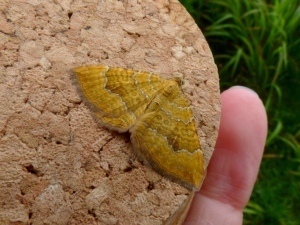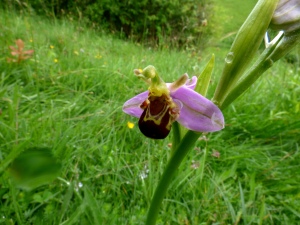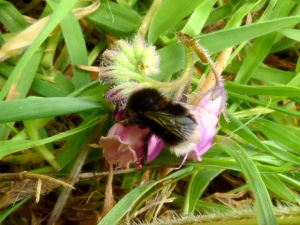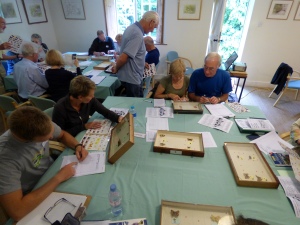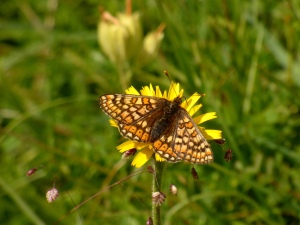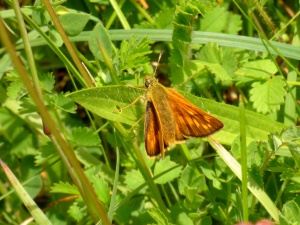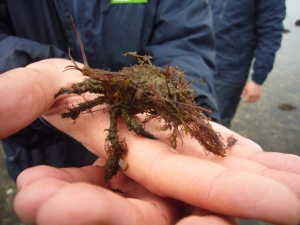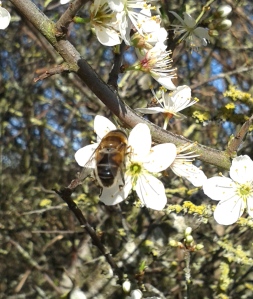A bit of everything (well, almost)
I know that every week I say, “Wow, what an amazing and full-on week I’ve had, and I’ve learnt so much!” It just seems to be the nature of this traineeship (and my spare time!) to just be jam-packed with cool wildlife stuff. Despite not being able to top the Short-Toed Eagle from last week, this week has seen a great variety of wildlife in a range of habitats.
It started off with a trip up to Lorton Meadows Nature Reserve, a gorgeous place on the edge of Weymouth. It’s full of interesting wildlife (including a nesting barn owl whose chicks you can watch on a webcam!), but the focus of this trip was the mysterious underwater world as the Chesil Beach Centre volunteers and I were there to do some pond dipping!
Coming up from underwater, I headed over to Fontmell Down Reserve in the north of Dorset for the big staff field trip of Dorset Wildlife Trust. Again, a variety of wildlife but I was particularly interested by the range of wildflowers there. Naturally we also saw some animals, including my favourites – some moths!
It was great to be out on a new reserve to me, and with knowledgeable people. With so many conservation people in one place, there was always someone on hand to tell you what a species was – and why (i.e. it’s identification features).
An excursion to Somerset saw a couple of the trainees learning about bumblebees and how land managers, particularly farmers, can help them – and other pollinators – out. The focus was on field margins, excellent spots for planting wildflowers. Our case study was the Frogmary Green Farm which has made the room for wildflowers, and it had worked as we saw plenty of bumblebees. One species of note was the Tree Bumblebee, and I believe the photo below shows a melanistic Tree Bumblee (i.e. it’s abdomen is black rather than the normal orange).
The big event of the week was the Little Tern Fundraising Evening at the Chesil Beach Centre where we were raising money for the Little Terns of Chesil Beach. As the second rarest breeding seabird in the UK, and the only colony of Little Terns in the southwest, this population definitely needs help. Although numbers have gradually increased, support is still needed as the eggs and chicks are so vulnerable to predators.
I still don’t have a decent photo of a Little Tern I’m afraid, so I’ve included a photo of Morgan Vaughan (the current Little Tern Officer) from the evening where he was getting excited about the eggs. You can follow Morgan on Twitter at @Morgan_Vaughan
The weekend began with a trip up to Barton Meadows Farm to learn about butterfly identification with the Dorset Branch of Butterfly Conservation. Although I knew a few species (e.g. Red Admiral / Peacock / Large Skipper), I wanted to know about the key identification features to look for when I see a butterfly. I can say that these are:
- Family (e.g. Skippers or Blues)
- Flight period
- Habitat
- Food plants
- Behaviour
- And last, but most obvious, patterning on wings
After a morning of theory, we put it into practice with a walk in the afternoon sun. We saw 16 butterfly species, as well as a number of moths (including Mother Shipton, Burnet Companion and Cinnabar), beetles and interesting wildflowers. A big thank you to Bill Shreeves and other members of the Dorset Branch for running the day – I know I learnt a lot and hope to get out there more often to get butterfly records!
The evening saw me out birdringing, or should I say birdwatching! With the target species of Cuckoo and Nightjar, we had set up mist nets on the heathland of the Lulworth Ranges. We referring to Steve Hales, Luke Philips and I. One of each of the target species flew into the net, but both promptly flew out again! Very frustrating, but at least I saw both of them – and I saw / heard a number of other birds including Woodlark, Meadow Pipit and Swallows.
Therein is the end of this week’s roundup, though I will admit to missing some things out – roadside verges surveying, World Oceans Day at the Chesil Beach Centre, my personal moth trapping. But to cover everything would be too much!


